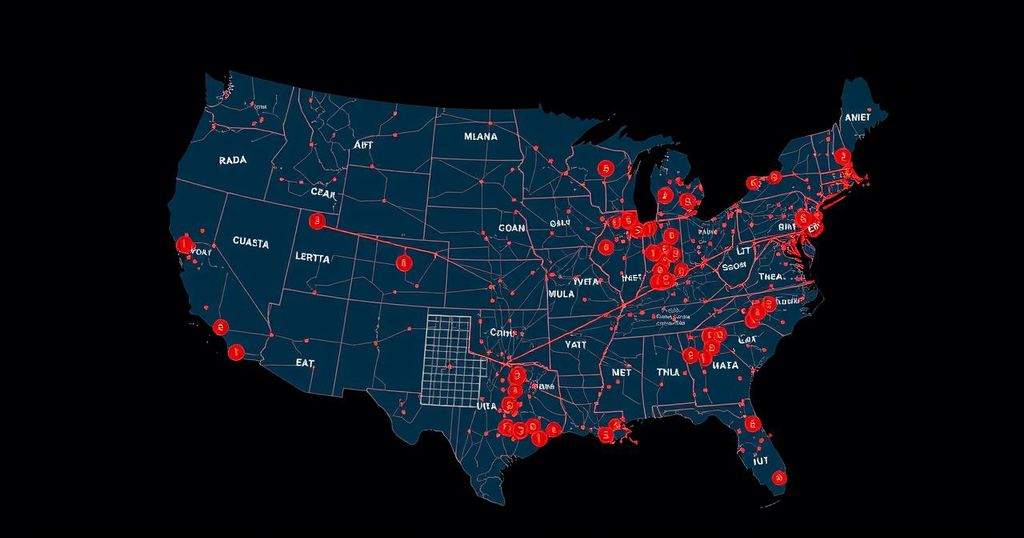Understanding the Tradition: Why U.S. Elections Occur on Tuesday in November

U.S. elections are held on the first Tuesday after the first Monday in November, a practice established in 1845 to provide a uniform election date. This timing relates primarily to the agricultural lifestyle of early Americans, as November avoided key planting and harvest seasons. Before standardization, state-specific election dates caused potential disparities in the democratic process. The choice of Tuesday also considered social practices, eliminating Sundays and market days. Consequently, this tradition continues to shape American democratic participation today.
The tradition of holding elections in the United States on the first Tuesday following the first Monday in November dates back to the mid-19th century. This practice, which is integral to American democracy, is rooted in agricultural considerations made by early Americans, particularly farmers. Unlike many countries that hold elections on weekends, the U.S. election system reflects a unique historical context. Before the establishment of this uniform election date, individual states determined their own election days, often conducting presidential elections over a span of weeks. The 1844 presidential election, for instance, witnessed voting occurring from early November to early December. However, the varying election dates raised concerns regarding the efficiency and fairness of the electoral process. There were fears that results in states voting earlier would potentially influence voters in states voting later, thereby impacting the overall election outcome. Hence, in 1845, the United States Congress enacted legislation that mandated a standardized election day, which would henceforth be observed as “the Tuesday next after the first Monday in the month of November.” The choice of a Tuesday for election day primarily stemmed from the agrarian lifestyle of many Americans at the time. November was selected strategically, as it did not clash with the critical activities of spring planting or the fall harvest, and it provided a timeframe free from the harsh winter months. Furthermore, due to the geographic dispersal of the population, many citizens, especially those living in rural areas, required time to travel to polling stations, often necessitating an entire day for such journeys. The day of the week was also determined through a process of elimination. Sundays were deemed unsuitable because of religious observance, while Wednesdays were set aside for market transactions where farmers sold goods. Consequently, Monday was also eliminated as it was favored for travel, thus the solitary available option was Tuesday. As Americans prepare to cast their votes in the upcoming presidential election, the significance of the chosen date speaks volumes about the nation’s agrarian roots and the evolution of its electoral process. In summary, the establishment of a national Election Day on the first Tuesday following the first Monday of November is an enduring legacy rooted in the nation’s agricultural past and a response to the practical challenges faced by voters in the mid-1800s. This tradition underscores the importance of accessibility and uniformity within the electoral system while reflecting the unique historical circumstances that shaped American voting practices. Overall, understanding this calendar choice provides valuable insights into how the cultural and practical considerations of American society in the 19th century continue to inform contemporary electoral processes.
The U.S. election date is deeply rooted in the agricultural practices and social structures of 19th-century America. Before the mid-1800s, election dates varied among states, leading to potential disparities and concerns regarding electoral fairness. These historical circumstances prompted Congress to establish a uniform election day in 1845 to enhance the democratic process and ensure equal voting opportunities across all states. By examining the factors influencing the selection of a Tuesday in November, one can appreciate how practical considerations of that era continue to resonate in modern electoral practices.
The United States maintains its tradition of holding elections on the first Tuesday after the first Monday in November as a reflection of its historical ties to agriculture and the need to standardize voting processes across states. This election day allows adequate time for rural voters to travel and participate in the democratic process, demonstrating a careful consideration of the practical challenges citizens faced. As millions prepare to vote, this tradition remains not only a legal requirement but also a symbol of America’s commitment to accessibility and uniformity in elections.
Original Source: www.aljazeera.com







